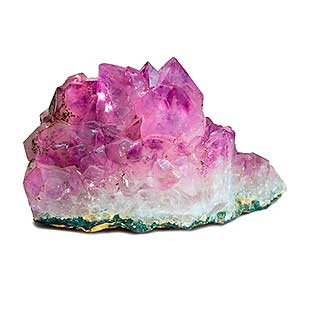Amethyst Guide
Buying tips, facts & history
Colour
Purple or violet
Our Source
Brazil
Mineral class
Quartz
Hardness
7 Mohs Scale
Birthstone month
February
Wedding anniversaries
6th and 17th
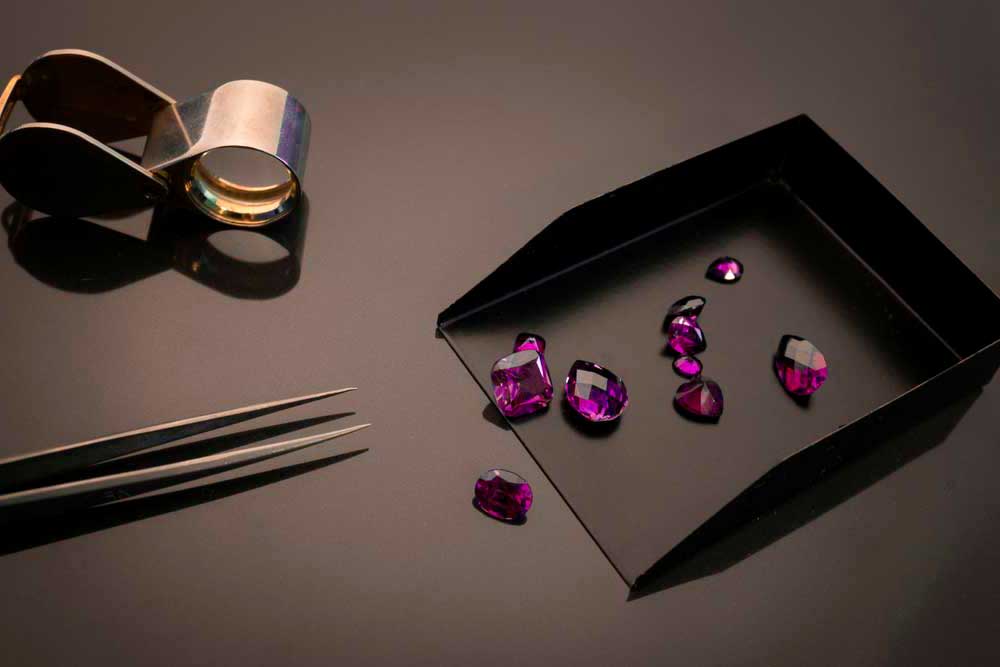
Hard Facts
Amethyst is a purple-violet variety of quartz. Its name comes from the Greek word “amethustos”, meaning “not intoxicated” – the name is a reference to the ancient Greek legend claiming amethysts could prevent drunkenness.
Amethyst is ranked 7 on the Mohs scale of hardness, alongside other quartz minerals. When exposed to harsh heat, amethyst becomes yellow.

Where on Earth?
We prefer to source our amethysts from Brazil.
Although the gemstone is found worldwide, Brazil’s Minas Gerais region is famed for its exceptionally large, vibrantly coloured and transparent amethyst crystals.
The country’s mining industry is largely artisanal, with large-scale mechanised mining restricted to protect wildlife, native tribes and the environment.
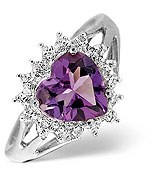
Birthstone and Anniversary
Amethyst is the birthstone for February and the gem that marks Valentine’s Day. Because Saint Valentine himself was famed for wearing a beautiful amethyst ring, the gemstone prevails as a symbol of love.
It is also the traditional gift given on 6th and 17th wedding anniversaries.
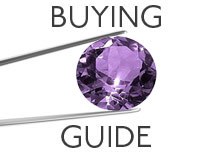
Buying Guide
How to assess a Amethyst’s quality and value?
Our gem expert assesses the quality of amethysts very much in the same manner as diamonds. He first studies their clarity, followed by colour and cut.
A high quality amethyst will appear clear of inclusions when examined without a magnifying jeweller’s loupe. It should exhibit a vibrant purple or lilac colour, enhanced by the gem’s cut.
So called “colour zoning” is not desirable in an amethyst that’s been set in jewellery – this is where a single gem appears to have patches of more than one colour within it.
COLOUR
An amethyst’s color can range from very light lilac to red-purple, brown-purple or dark blue-purple. Strongly saturated colour is preferable, but you should avoid very dark tones because they do not let enough light into the stone. A vibrantly coloured, but transparent amethyst will offer the best sparkle.
CARAT
The amethyst occurs abundantly as large, clear crystals, especially in Brazil. Therefore its carat price shows no dramatic rise as the gem gets bigger. It’s the perfect gemstone for large, showstopping jewellery pieces at a very affordable price.
CLARITY
Because amethyst is abundantly available today, there is a general expectation for it to be eye-clean when sold as jewellery. Some redder hued amethyst varieties from Africa may have noticeable imperfections, but the purple type from Brazil is generally very clean.
CUT
Amethyst is a gem that can easily be cut into many different shapes. These include standard cuts, such as rounds, ovals, emerald cuts or pear shapes. Because amethyst is readily available, cutters can afford to discard relatively large amounts of the stone. This has led to the popularity of fancy shapes like hearts and triangles, as well as one-off designer cuts.
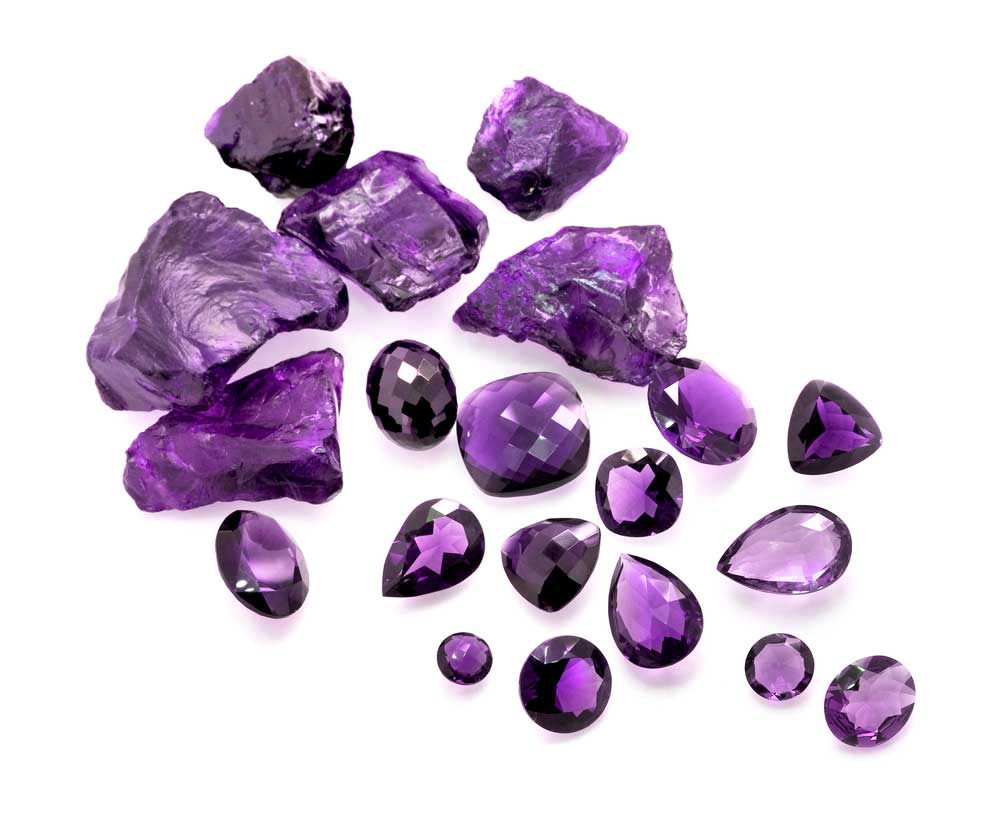
Natural or Treated?
Purple amethyst generally needs no treatment. Because of its ample availability, it is usually expected to be natural.
However, some amethysts are subjected to heat treatment to turn them yellow. This heat treated variety is sometimes referred to as citrine, which is in fact a yellow, naturally occurring variety of quartz. A reputable jeweller will always tell you if any treatments have been applied.
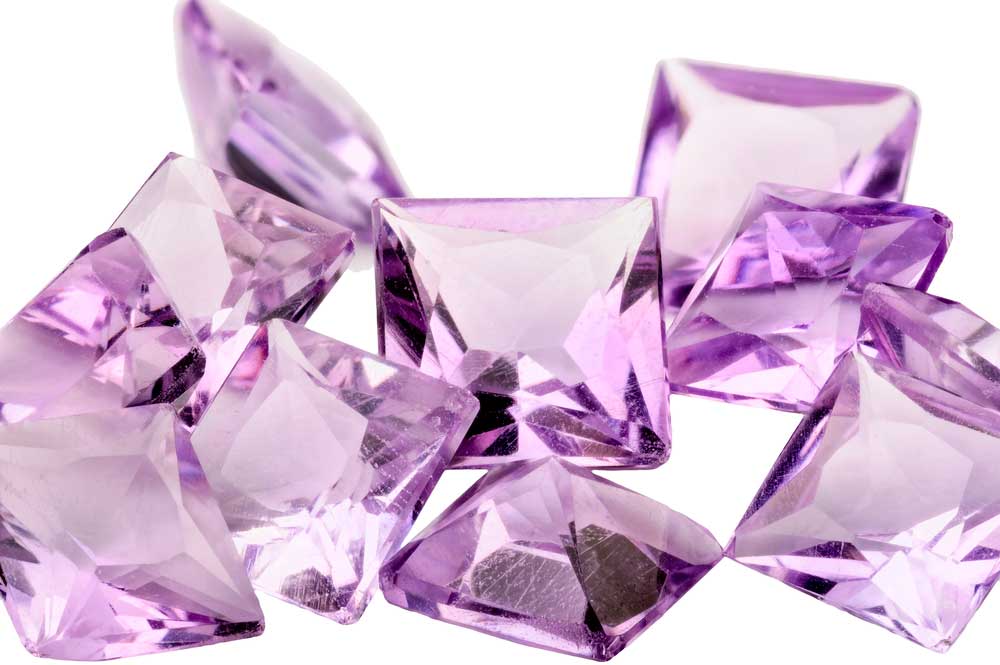
Care and Cleaning
Amethyst is relatively tough and therefore suitable for all jewellery types, including large rings. However, you should protect it from scratching, excessive knocks and heat.
Harder gems like diamonds or sapphires can scratch amethyst, so always store your gemstones separately. Your amethyst may also discolour when exposed to harsh light and heat, so never sunbathe with it on and do not steam wash it. To clean it, just soak it in warm, soapy water, scrub with a soft toothbrush and pat dry.
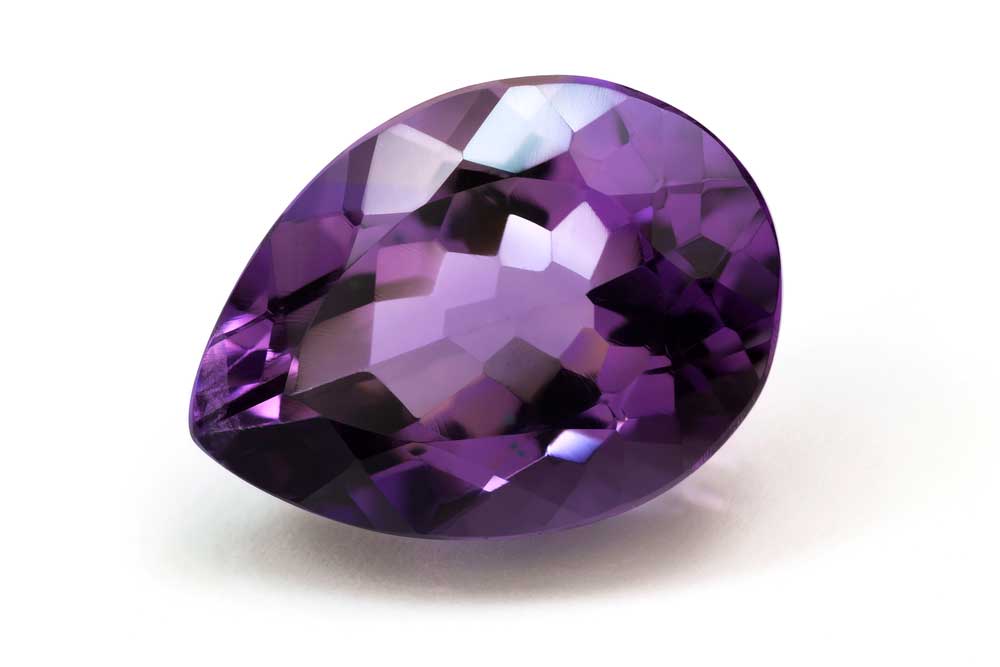
Modern History
Amethyst has always been the most valued quartz variety. The Queen of Sweden’s tiara, which originally belonged to France’s Empress Josephine, features enormous oval amethysts surrounded by diamonds. Queen Elizabeth II also has a stunning amethyst set called the Kent Demi-Parure.
Abundant Brazilian amethyst mines were discovered in the 19th century. Thanks to this, the gemstone has become very affordable and is no longer exclusive to aristocrats and collectors.
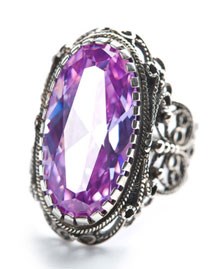
Famous Amethysts
The infamous “Delhi sapphire”, which is in fact a purple amethyst, has a rather mysterious story. Stolen from an Indian temple, it is said to be cursed.
A young curator called Peter Tandy found it in the British Natural History Museum’s vaults – along with a letter from its previous owner warning that it brought bad luck. When Tandy ignored the ominous message and took the stone to a science symposium, he was caught in a horrific thunderstorm and fell ill with kidney stones.
But despite the amethyst’s dangerous reputation, today you can see it on display in the Natural History Museum in London.
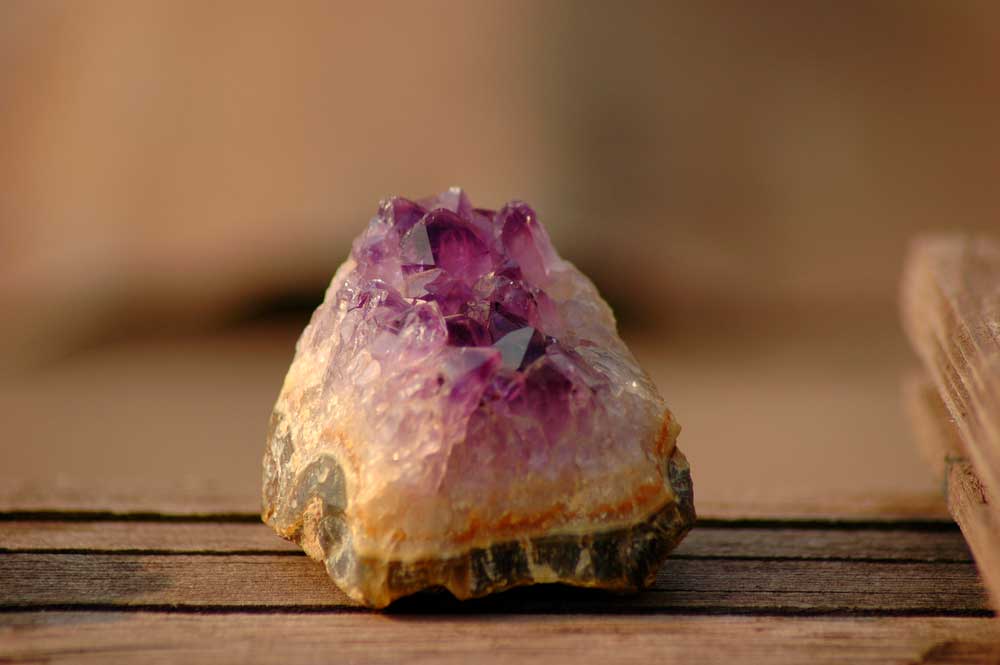
Legend & Lore
Amethyst has an enchanting and interesting history. In ancient Greece it was believed to help its wearer think clearly – as well as prevent drunkenness. Tibetan Buddhist monks regard amethyst as a sacred stone, using it for prayer beads.
According to Roman legend, Saint Valentine himself wore a purple amethyst ring with an engraving of Cupid on it. As the holy man travelled around the Roman Empire, people would recognise the image on his ring and ask him to perform marriages. Today we still celebrate St. Valentine’s Day on 14th February – and the amethyst remains the symbolic gem for attracting love.

